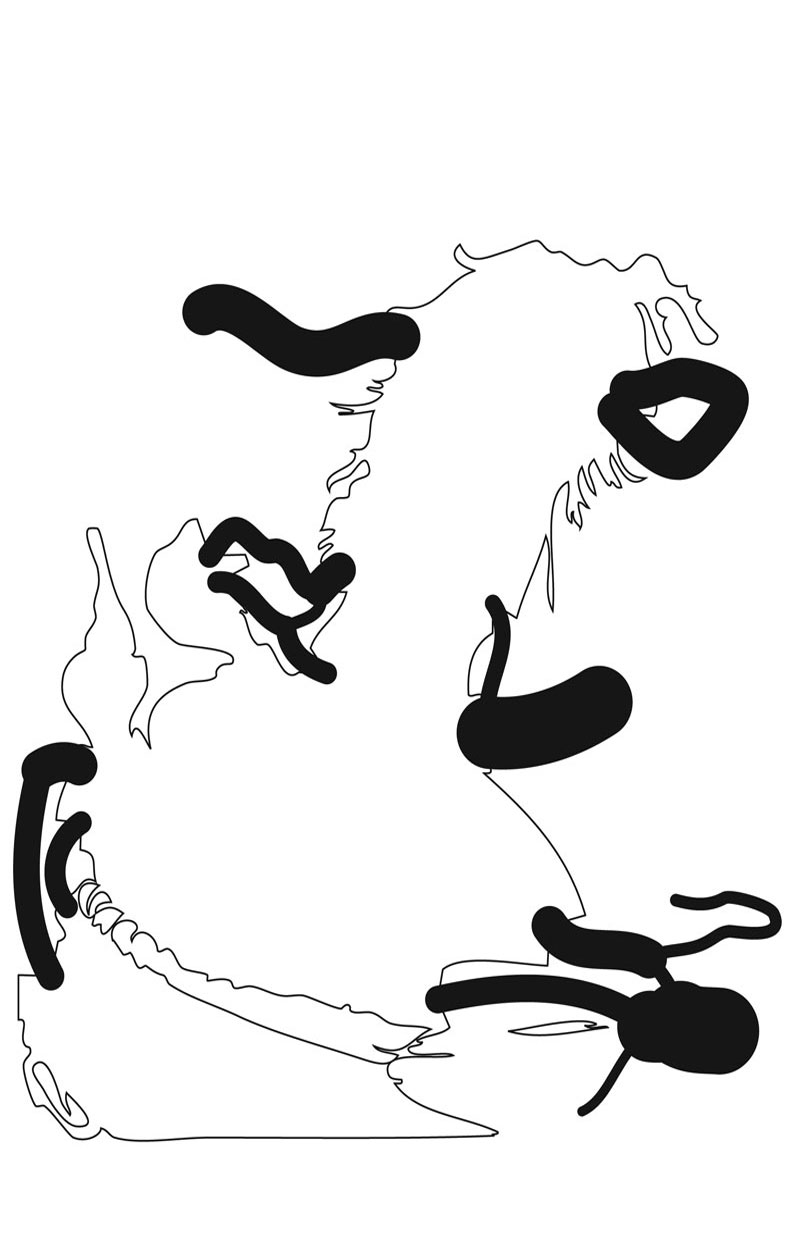
Motel Hanoi
ca. 2001
In the basement of a small suburban house in Wahlenstraße in Cologne there is a tiny fall-out shelter about four square metres large. Completely padded with styrofoam and illuminated only by the glow of a computer screen, there is a bunk on which you can sleep. You are the guest of Motel Hanoi. If you ask the operators living on the upper, lighter floors about the origin of this proud name, you get evasive answers. Equipped with a key, you are free to come and go if you pay a small amount of money with which the electricity supply and also the concentrated feed for the clever and attentive watchdog, Paul, can be paid.
Still preoccupied with the last echoes of the nightmares initially happening with palpable clarity in Motel Hanoi, in which the artist Absalon, the musician Roots Manuva and the former publican at the Green Corner alternate in torturing the lamed one lying there, in the morning you go into town to settle the business for which you undertook the trip. After that, you’re free and you can eat a gherkin during a break at the pub, Brauerei Päffgen. Nothing has changed there. There’s Kölsch beer. Later on you notice that Cologne has shrunk. You move briefly to the left and then to the right and have already traversed seven suburbs. If you have taken in the worldly atmosphere of the local Bulgari boutique, you are ready to visit König’s bookstore just to remind yourself you would have liked to forget about the harsh Rhineland cordiality. In the take-away shop of the famous Taschen Verlag, by contrast, your potential act of purchase is encouraged with a smile. There is both an old and a new galleries quarter. The well-known galleries such as Schweins, Nagel and Capitain don’t take any chances and show a strong, international program. A tall man dressed in black leaves the museum and speaks cheerfully on his mobile phone. Kaspar König is satisfied with his new exhibition. The video lounge designed by bold Cologne designers in the futuristic style of the Fifties also continues to attract attention and is used to stage works by Erwin Wurm.
The day is coming to an end, and the streets are emptying. At A-Musik you don’t really have to find what you are not really looking for. You can make a date for later at a reading that will take place in the Turkish quarter in a project room with which an art student is writing her diploma thesis. The name of the room is related to Berlin, which people here have already visited several times and, and in that connection, people can also make something of the term Maschenmode (knitted fashion). Or do you want to eat a Vienna schnitzel with pumpkin seed oil beforehand? Later you meet upright, but speechless old Cologne artists bent over their Kölsch. They can’t tell you much because they have, so to speak, already worked through it all.
Cologne is a city from which art has moved away. But that doesn’t matter. Everything has been distributed at the appropriate time. Melancholy does not suit a Kölner. You decide to return to Motel Hanoi and celebrate in the ante-chambers to the bunker a final last drug party with your friends, unnoticed.
The next day you go to the railway station and take the intercity express. You sit, completely empty, in the dining car.